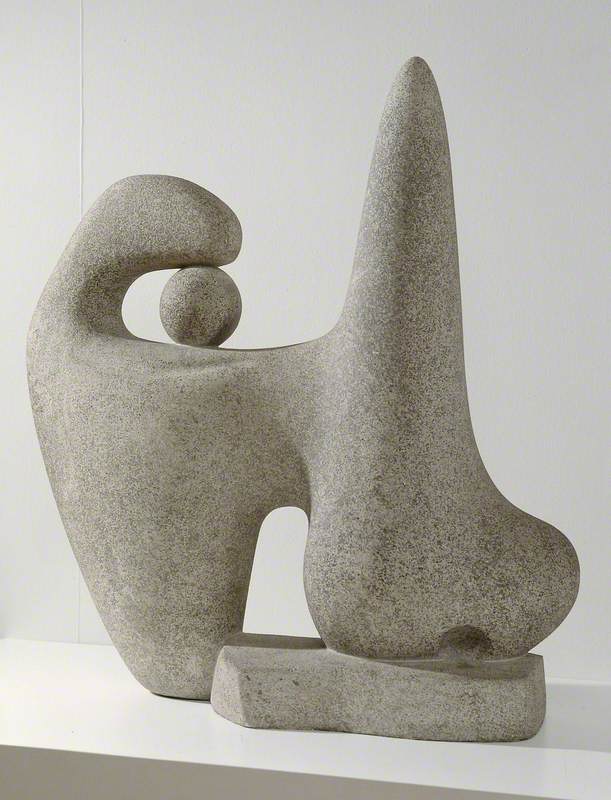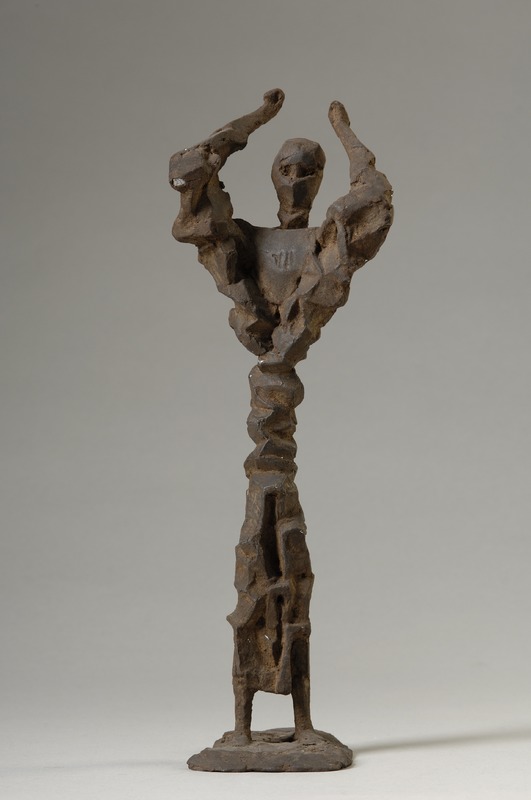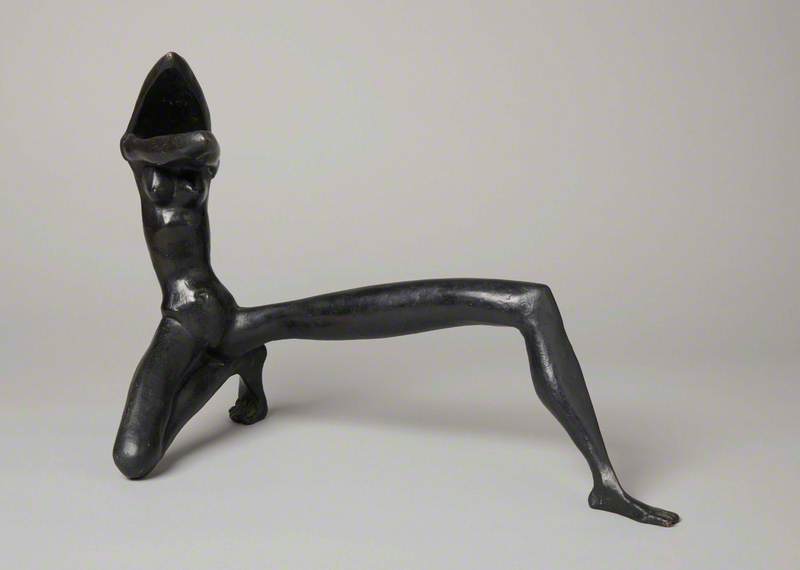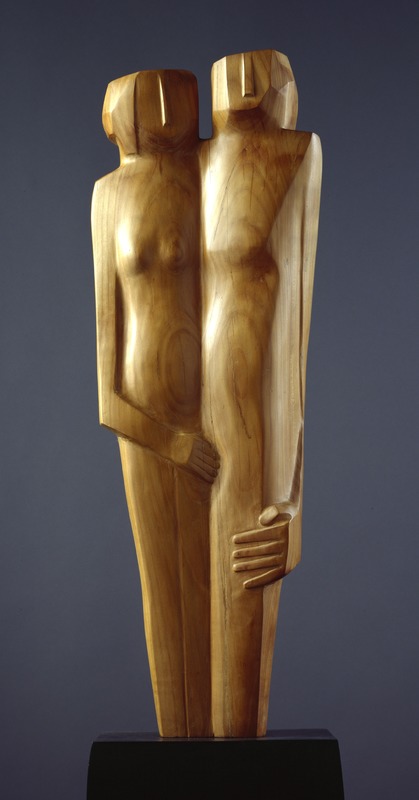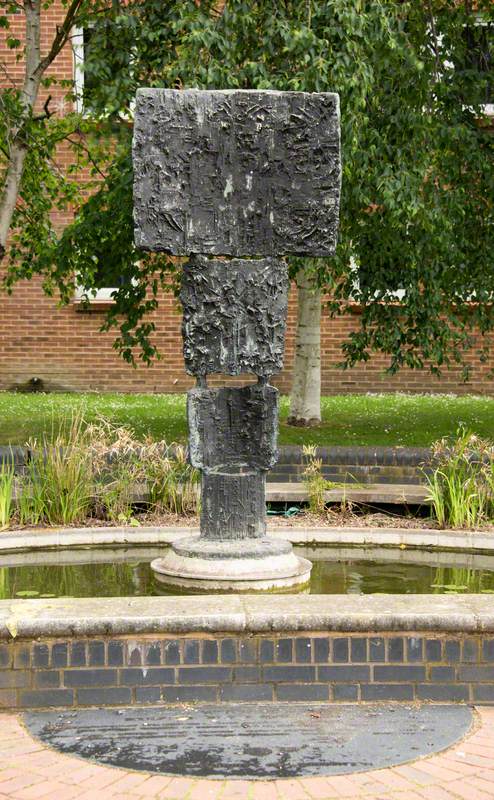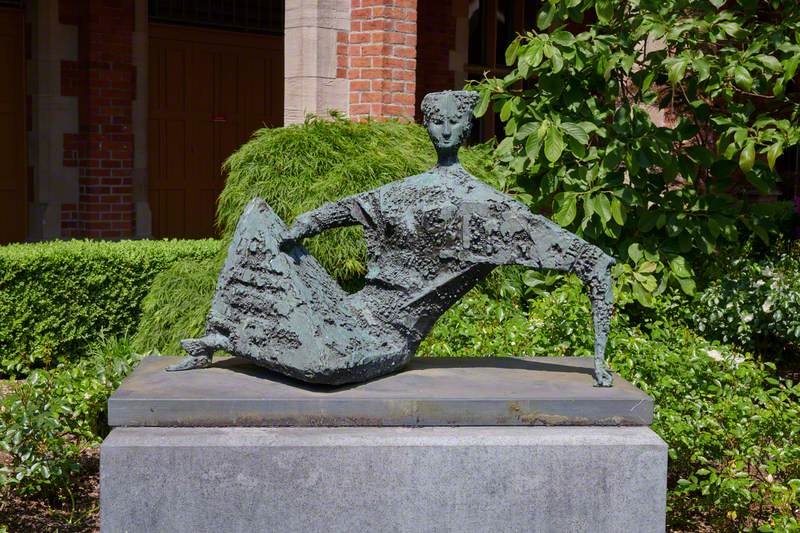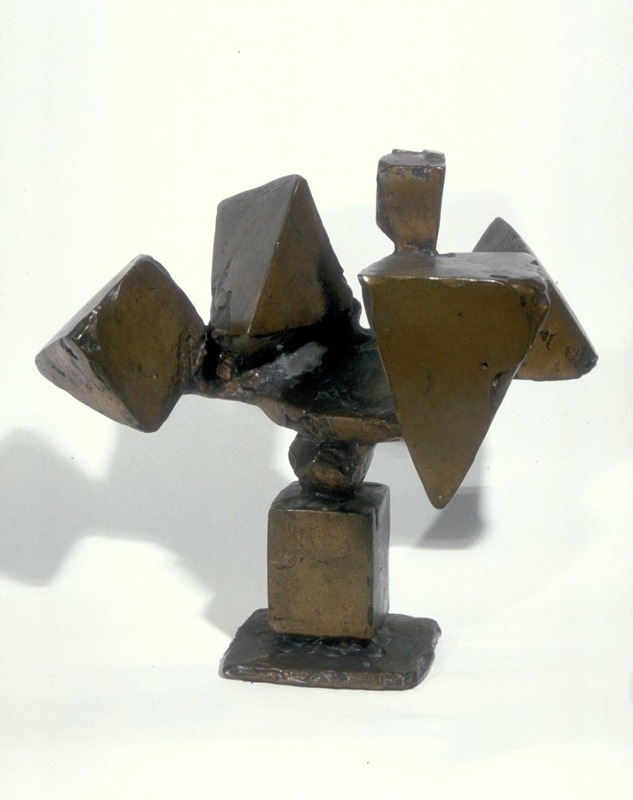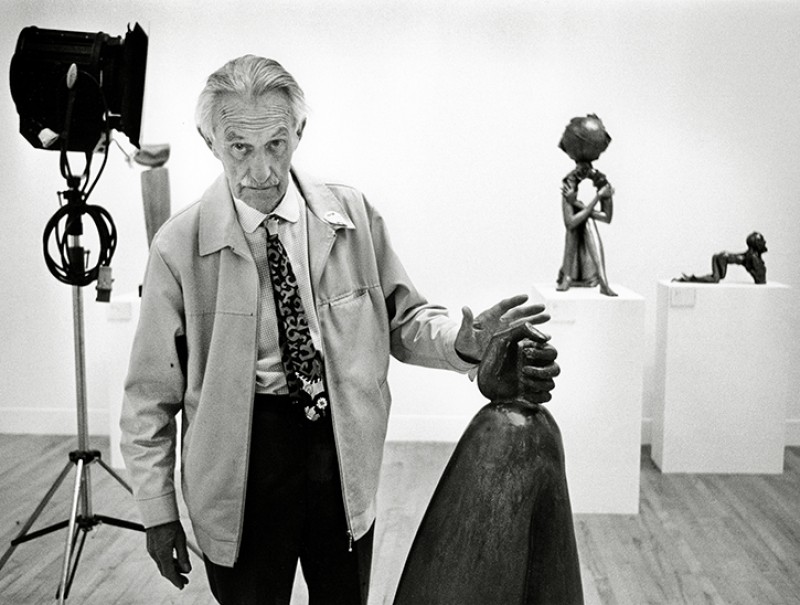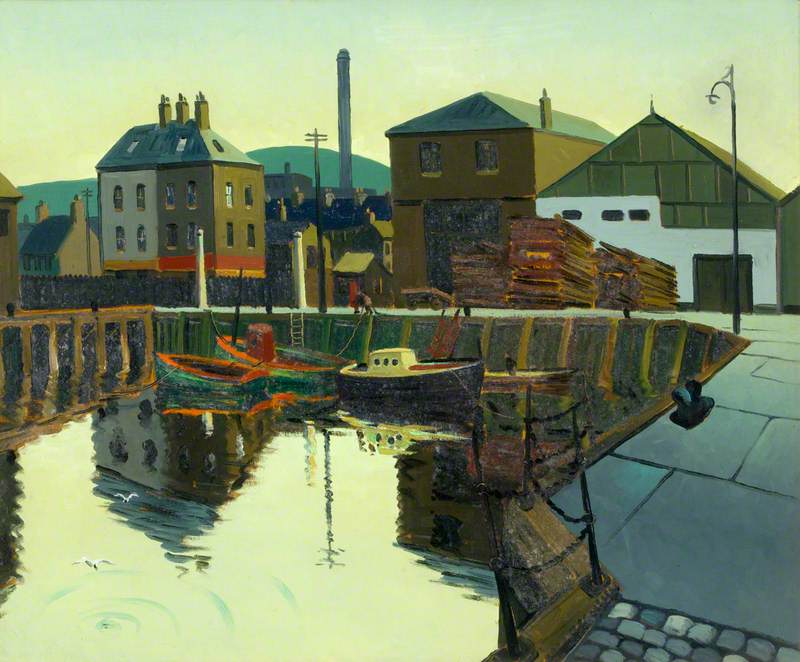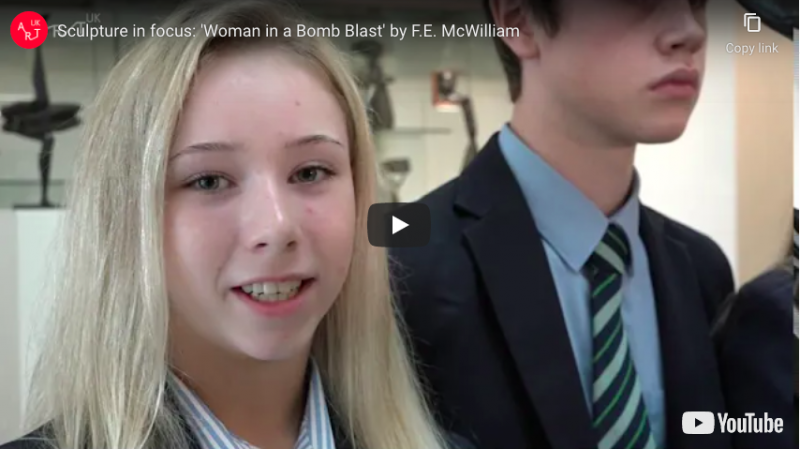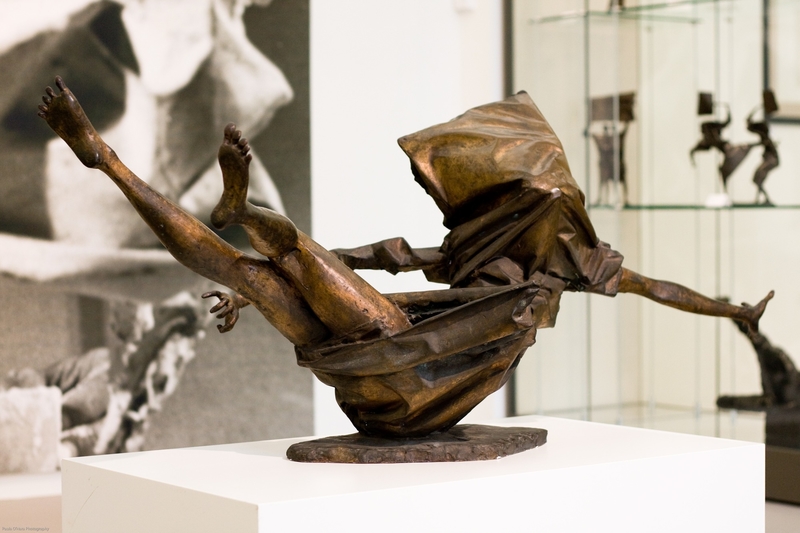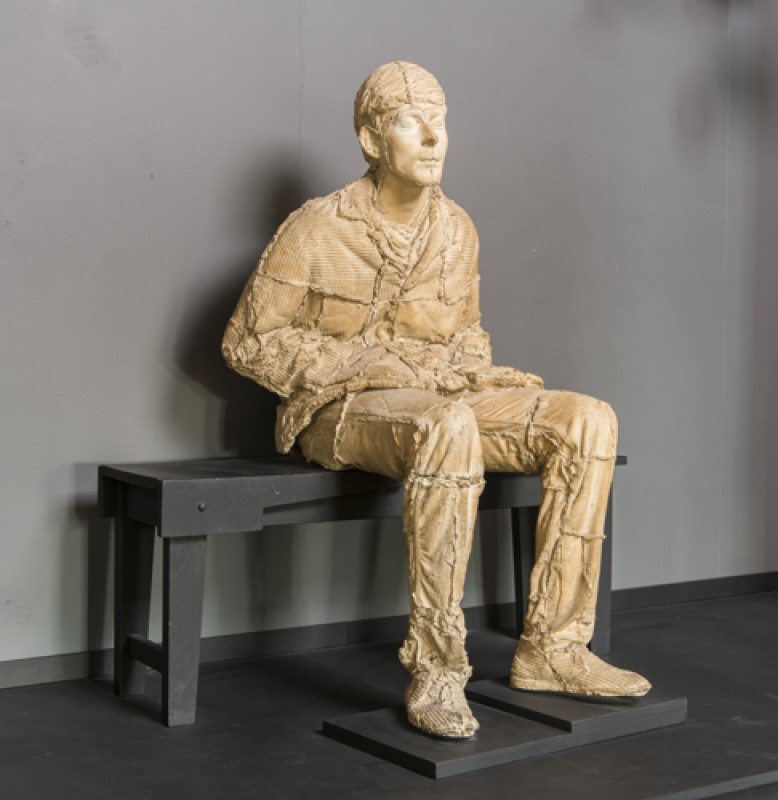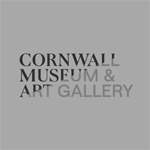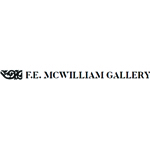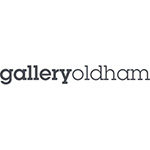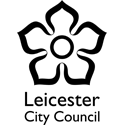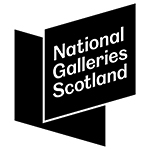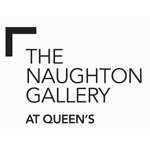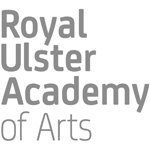Frederick Edward McWilliam [also known as F.E. McWilliam] was born in Newry Street, Banbridge, County Down, Ireland, on 30 April 1909. He attended Belfast College of Art from 1926 to 1928, and the Slade School of Fine Art, University College, London where he studied under Randolph Schwabe and Henry Tonks from 1928 to 1931. It was his intention to become a painter but having met Henry Moore in 1929, he decided to pursue a career as a sculptor. In 1931 he was awarded the Robert Ross scholarship and for a year lived in Paris during which time he met the sculptor Ossip Zadkine (1890–1967). He returned to England in 1932. In 1936 he attended the International Surrealist Exhibition at the New Burlington Galleries in London and in 1938 exhibited with the British Surrealist Group.
Following war service in the Royal Air Force from 1940 to 1945, McWilliam resumed his work as a sculptor. He also taught at Chelsea School of Art in 1946–47, and at the Slade from 1947 to 1968.
He produced a number of public sculptures including 'The Four Seasons' for the Festival of Britain 1951; 'Man and Bird' for Basildon New Town in 1958; 'The Witch of Agnesi' for Avery Hill Training College in Woolwich in 1959. In 1962 he made a bronze bust of Chief Hosea Kutato of Namibia which was presented by the African Bureau to the United Nations in New York.
In 1959 he held his first solo exhibition at the London Gallery. Later solo exhibitions of his work were held at the Hanover Gallery in London in 1952 and 1956, and Waddington Galleries in London in 1961, 1963, 1966, 1968, 1971 and 1973. In 1958 a retrospective exhibition was held at the Royal West of England Academy in Bristol and in 1981 the Arts Councils Belfast and Dublin arranged a touring retrospective of his work.
McWilliam was elected a member of the London Group in 1949 and the Royal Society of British Artists (RBA) in 1950, and an Associate of the Royal Academy (ARA) in 1959, and in 1989 he was appointed a Senior Royal Academician.
McWilliam married the painter Elizabeth Marion (Beth) Crowther (c.1909–1988). He died at 12 Pembroke Square, Kensington, London, on 13 May 1992.
Text source: Art History Research net (AHR net)
